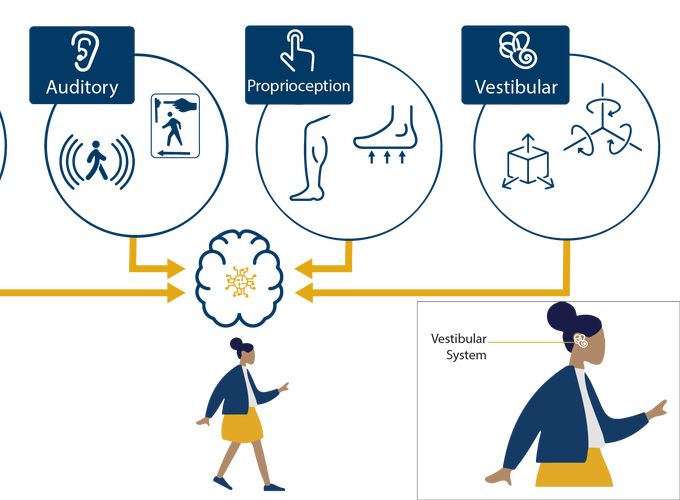Feeling ourselves Move
 Image credit:
Image credit:
Feeling ourselves Move
Abstract
As you walk, bike, or drive down the street, your brain puts together (integrates) sensory information from different sources. It uses what you see, what you hear, and how your head and body move to help you judge your own movements. As you move, your brain must ensure that the world does not look blurry and that you can judge how fast you are moving, how far you are moving, and the direction you are heading. And of course, falling and collisions should be avoided! Self-motion is the term we use for movements we make with our bodies, such as walking, running, jumping, or even sitting still. This article explains how our brains achieve the amazing task of perceiving our own movements and how we use this information to stay balanced and navigate our world. It also describes what happens when errors in self-motion occur (due to illness/injury) and how the science of self-motion perception can enhance video games and virtual reality.
New paper for young and curious minds with @jlcampos11 and @MaryamPandi in @FrontYoungMinds
— John Butler (@jslbutler) February 18, 2020
“Feeling” Ourselves Move: A Team Effort by Our Senses.
The paper shows how we investigate visual, proprioceptive and vestibular signals for walking. https://t.co/cZA66NSOZG 1/5#scicomm pic.twitter.com/im6SVR9s10